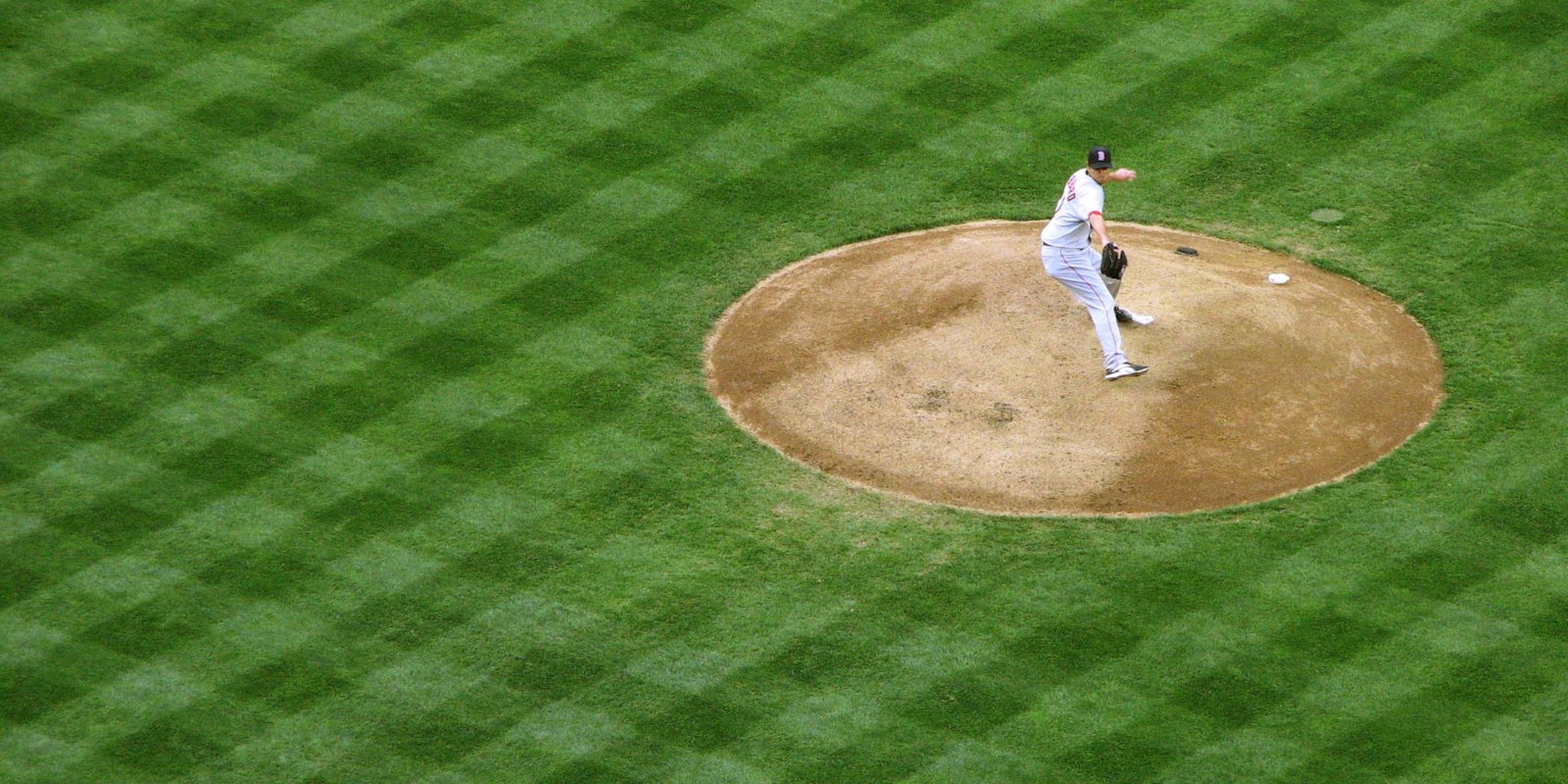America’s past time is getting a modern day makeover. Major League Baseball has approved the use of several wearable tracking devices to be used during big league play.
The rules committee for the sport has given the go ahead for players and teams to start utilizing two devices during games: the Zephyr Bioharness, which monitors heart rates and breathing, and the Motus Baseball Sleeve, which offers feedback on hitting and pitching while monitoring workload.
Two bat sensor products, the Blast Motion Sensor from Eastman and the Swingtracker from Diamond Kinetics, have also been given the nod to be used on field during workouts. Getting the devices into games will likely prove trickier, but batters will be able to track their cuts during batting practice to see how they’re swinging.
Joe Nolan, the CEO of Motus Global, told the Daily Dot that his company is currently working with several organizations to get is Baseball Sleeve on the arms of players during the 2016 season. Motus is “anticipating strong adoption” of the wearable.
Motus’ trackers have been approved for use by MLB players previously, including for in-game purposes at the minor league level. It wasn’t given the in-game treatment during the 2015 season of Minor League ball, but has been utilized by several players to track progress during the rehab process after an injury.
The addition of wearables will bring a whole new level of data to baseball, a sport already driven by intricate statistical models. The level of statistical analysis is so competitive within the sport that teams have actually been caught hacking into one another’s databases—a crime serious enough that the FBI had to get involved and the guilty party was fired and faced up to five years in prison.
Don’t expect wearables to change in-game decisions, though. The data derived from the devices can’t be taken during the game; players and teams can only utilize the data once the final out is recorded. Players are allowed access to the information themselves, though teams will likely want to keep track of every last drop of data they can get their hands on.
This creates a potential conflict of interest between the parties; players and teams both have vested interest in the overall health of those on the field, but data can also reveal information that a player may not want the people paying him to have. There’s concern that the data may represent an invasion of player privacy.
Football players have had similar conflicts when coaches have introduced wearables into the locker room. The National Football League Players Association objected to teams attempting to use fitness trackers to monitor player sleep habits and off-field activities, citing privacy concerns.
It’s not uncommon for a player to hide an injury. A device like Motus could alert the wearer or his team to an increased injury risk, which the player may have otherwise kept under wraps. Long term health isn’t always the primary motivating factor for a player; if playing for a new contract, for example, they may make the decision that it’s best to be active, even if not at full-strength, then to not be seen at all.
Pitchers in particular have been placed under increased scrutiny in recent years, with teams sitting their aces in order to preserve their arm rather than place additional stress on them. Current Toronto Bluejays relief pitcher David Aardsma told the Wall Street Journal in 2013, “Some things get over-exaggerated and you get shut down when you can still pitch.”
Nolan said that Motus will “work closely” with partnered players and teams to help them analyze the data. “We have an expertise based on years of clinical [and] lab experience and our goal is always to make that data actionable,” he explained. “Numbers and metrics alone are not as powerful as applying that information to a custom program for players and organizations.”
Time will tell how the data is actually used and what sort of decisions will be made based on the new information, but the primary goal for all parties involved appears to be improving the health of the players. “We expect to help keep players healthy and on the field performing at their highest level, which ultimately makes the game better,” Nolan said.


